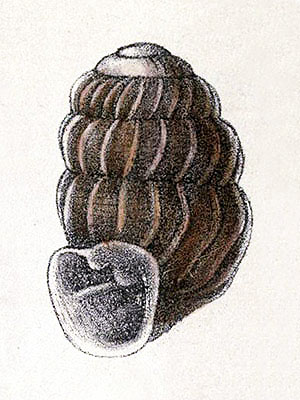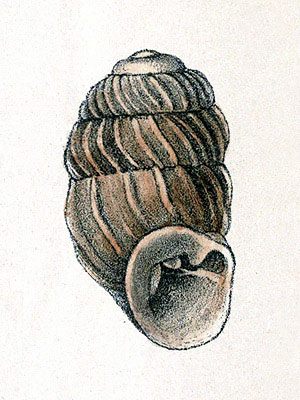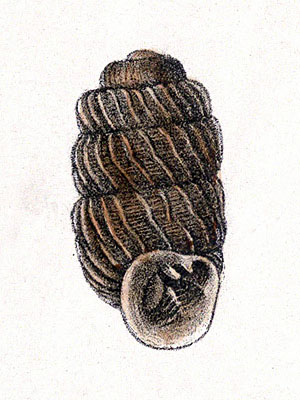Lanai Striped Lyropupa Snail (Lyropupa rhabdota ssp. lanaiensis)
This form, described in 1920, was restricted to the island of Maui, Hawaiian Islands.
“Specimens from West Maui agree very closely with the type form in shape, color, etc., but are slightly smaller. They differ mainly in that the embryonic whorls are much more finely striate spirally, and in the presence of a minute basal fold and the more axially seated columellar fold. There are usually about two more ribs on the last whorl, which is furnished with from 15 to 17. Length 2.5, diam. 1.5, apert. 1.0 mm.; 51/4 whorls.
…
From L. r. lanaiensis it is separated by its more convex and swollen whorls, lighter color and much more finely spirally striate embryonic whorls.” [1]
***
According to a study from the year 2018, all Hawaiian species of this genus are now sadly extinct. [2]
*********************

(public domain)
*********************
References:
[1] George W. Tryon; Henry A. Pilsbry; a.o.: Manual of Conchology. Second Series: Vol.25, Pupillidae (Gastrocoptinae, Vertigininae) 1918-1920
[2] Norine W. Yeung; Kenneth A. Hayes: Biodiversity and extinction of Hawaiian land snails: how many are left now and what must we do to conserve them – a reply to. Integrative and Comparative Biology 58(6): 1157-1169. 2018
*********************
edited: 25.02.2024







